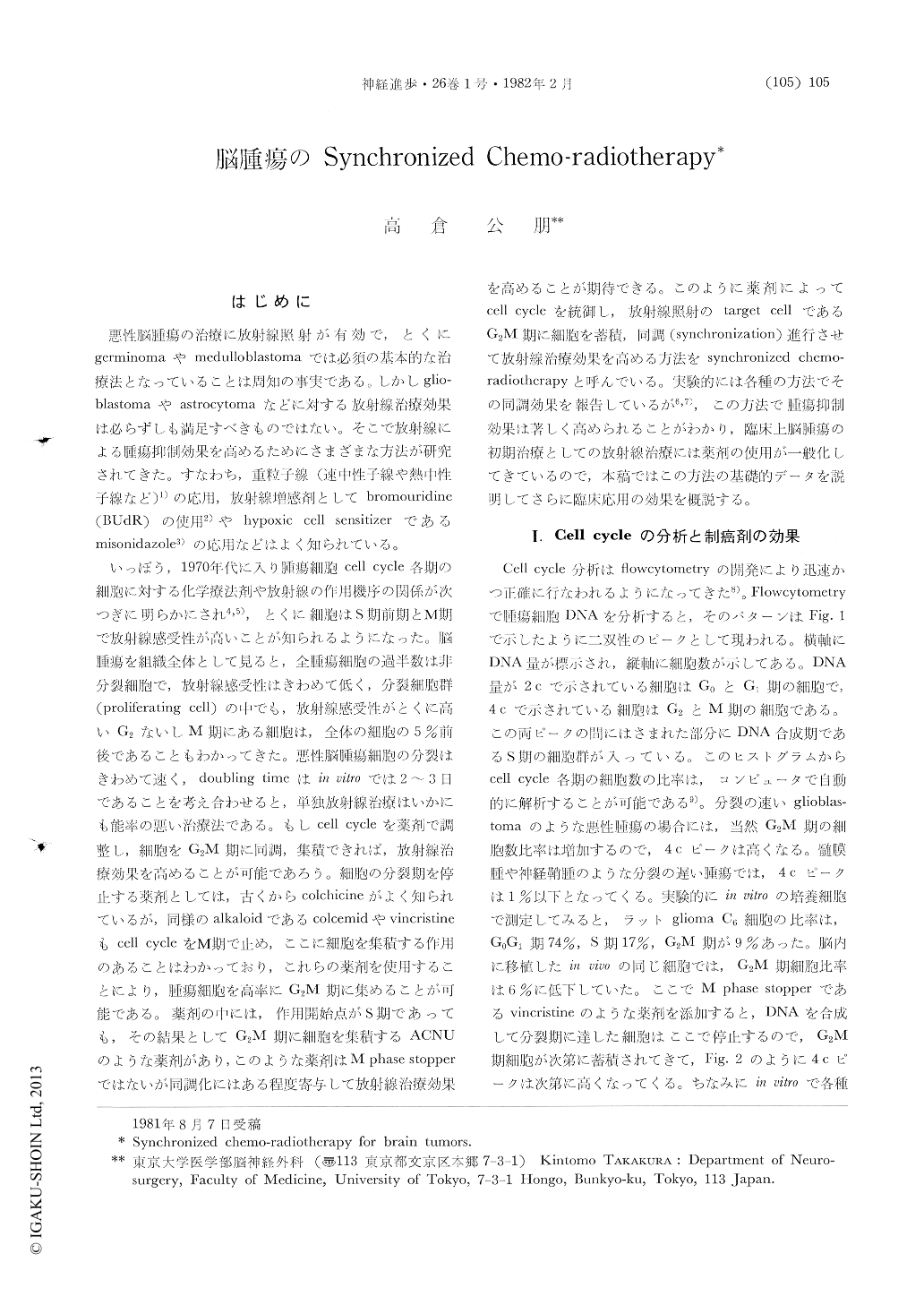Japanese
English
- 有料閲覧
- Abstract 文献概要
- 1ページ目 Look Inside
はじめに
悪性脳腫瘍の治療に放射線照射が有効で,とくにgerminomaやmedulloblastomaでは必須の基本的な治療法となっていることは周知の事実である。しかしglioblastomaやastrocytomaなどに対する放射線治療効果は必らずしも満足すべきものではない。そこで放射線による腫瘍抑制効果を高めるためにさまざまな方法が研究されてきた。すなわち,重粒子線(速中性子線や熱中性子線など)1)の応用,放射線増感剤としてbromouridine(BUdR)の使用2)やhypoxic cell sensitizerであるmisonidazole3)の応用などはよく知られている。
いっぽう,1970年代に入り腫瘍細胞cell cycle各期の細胞に対する化学療法剤や放射線の作用機序の関係が次つぎに明らかにされ4,5),とくに細胞はS期前期とM期で放射線感受性が高いことが知られるようになった。脳腫瘍を組織全体として見ると,全腫瘍細胞の過半数は非分裂細胞で,放射線感受性はきわめて低く,分裂細胞群(proliferating cell)の中でも,放射線感受性がとくに高いG2ないしM期にある細胞は,全体の細胞の5%前後であることもわかってきた。悪性脳腫瘍細胞の分裂はきわめて速く,doubling timeはin vitroでは2〜3日であることを考え合わせると,単独放射線治療はいかにも能率の悪い治療法である。
The role of synchronization of the tumor cell cycle by the appropriate chemotherapies prior to radiation was investigated for potentiating the tumor suppressive effect of radiotherapy. It is well known that the G2 and M phases of the cell cycle are especially sensitive to the low-LET radiation and several alkaloids such as colchicine or colcemide have the arresting effect of the cell cycle at the mitotic phase. On the other hand, the cell kinetic studies have become easier and more precise by the development of flowcytometric analysis.

Copyright © 1982, Igaku-Shoin Ltd. All rights reserved.


